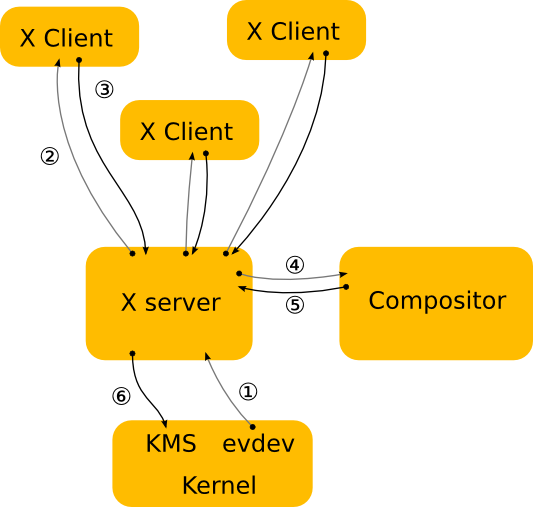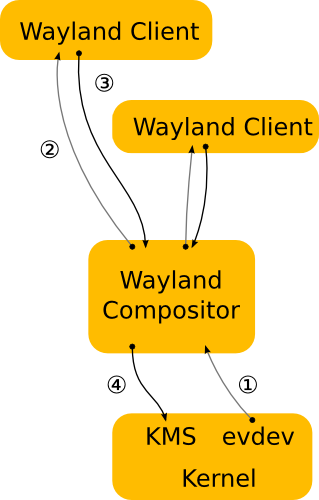 |
| This is "MY" way: AC/DC, no Sinatra! |
In these days, the FOSS world seems shaked by a earthquake called "Ubuntu". Mark Shuttleworth, founder of the most widespread GNU/Linux distribution,
in a post on his blog, talks about the possibility to replace X.org and the whole X-Server architecture with the modern and clean Wayland display. Mr. Shuttleworth admits X.org is a living project, more active now than ever and he admits and it's die hard. But, also, he said
«[..] we don’t believe X is setup to deliver the user experience we want, with super-smooth graphics and effects.
[..] We’re choosing to prioritize the quality of experience over those original values, like network transparency.»
Yeah mr. Shuttleworth! This is the first time I heard statements like this since the Waldo Bastian's analysis about KDE
[1]. Statements about the importance of
user experience over technical decisions
Now, let's see differences between X.org and Wayland
 |
| X architecture (curtesy of Wayland's site) |
As you can see in this graph, rendering a frame is a very long path of APIs. And this is because (from Wayland's site):
«
In general, the X server is now just a middle man that introduces an extra step between applications and the compositor and an extra step between the compositor and the hardware.»
Now, let's look Wayland's architecture:
 |
| Wayland's architecture (curtesy of Wayland's site) |
In this graph, you see that Wayland embeds the compositor. This reduces passages to render a frame and then, accelerate displaying speed. But, most important, Wayland embeds the detection of window whom recive an I/O message (such as a click). This task, in X, is done by the compositor: in Wayland is part of the display manager.
Wayland, also, it's smaller than X.org and less resources-hungry. These features makes it perfect also for small computers, such as netbooks and tablets. Furthermore, X can works as a Wayland client and this can help the passage to the new display manager.
It's true Wayland doesn't work on old hardware. But this means we'll never use it on a Pentinum I 233. About this, mr. Shuttleworth said
«
The requirement of EGL is new but consistent with industry standards from Khronos»
And he's right. Now the bad news: NVidia (AaronP's words) say
«
We have no plans to support Wayland.»
Does this means the end of Wayland project? Who knows? Actually NVidia just said ACTUALLY they have no plans, so in future this decision could change. Anyway, a passage to Wayland is a big step for FOSS world, at least as the begining of KDE project.
[1] I read this analysis on a italian magazine (
Linux &C.), when KDE 3.0 was released. I can't find Waldo Bastian's post anymore, because all forums are now dead-links. Can you help me to find it?





